Which of the Following Are Factors That Helped Lead to the Start of Feminist Art in the 1970s
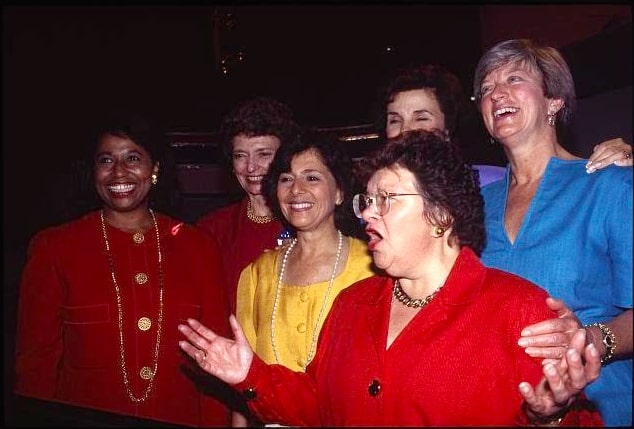 Yr of the Woman Jul 1992
Yr of the Woman Jul 1992
Patterson, Laura, active approximately 1989-2000, photographer | National Women's History Museum
FEMINISM : The Third Wave
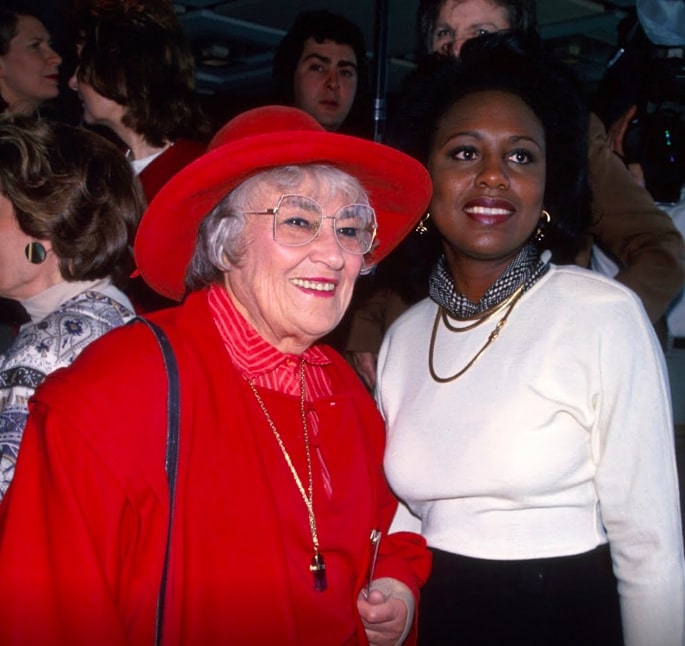 (1994) past David Mcgough
(1994) past David Mcgough
LIFE Photo Collection
The Third Wave
Much like the first and second waves, information technology is difficult to pinpoint exactly when the 3rd moving ridge of the feminist movement began. However, this resurgence of women's rights activism is traditionally seen equally a response to mainstream 2nd wave feminism. As the third moving ridge started in the 1990s, women'southward rights activists longed for a motility that continued the piece of work of their predecessors while addressing their electric current struggles. In improver, these women wanted to create a mainstream motility that was inclusive of the various challenges women from different races, classes, and gender identities were facing. Image: (L-R) Second Wave feminist Bella Abzug with police force professor Anita Loma.
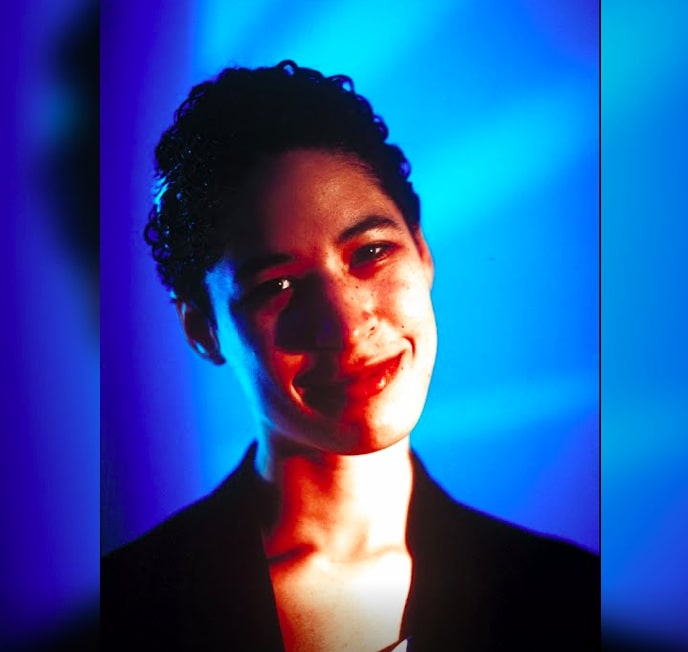 Ldrship (Nov 1994)
Ldrship (Nov 1994)
past Ted Thai
LIFE Photo Collection
Although it is hard to isolate the single incident that started the third wave, there are two events that are traditionally credited with inspiring a new generation of women's rights activists. The first one was the 1991 Anita Loma hearings that sparked national feminist back up when Colina testified against a Supreme Court nominee for sexual harassment. While watching the hearings, Rebecca Walker, daughter of second wave icon Alice Walker, began describing the political climate as "The Third Wave." In addition, beginning in the 1990s, underground feminist punk rock bands surfaced in "Anarchism Grrrl" groups. These "girrl" groups combined punk culture with politics, feminism, and style. Both of these occurrences helped to conductor the feminist movement into a new era of women'due south activism.
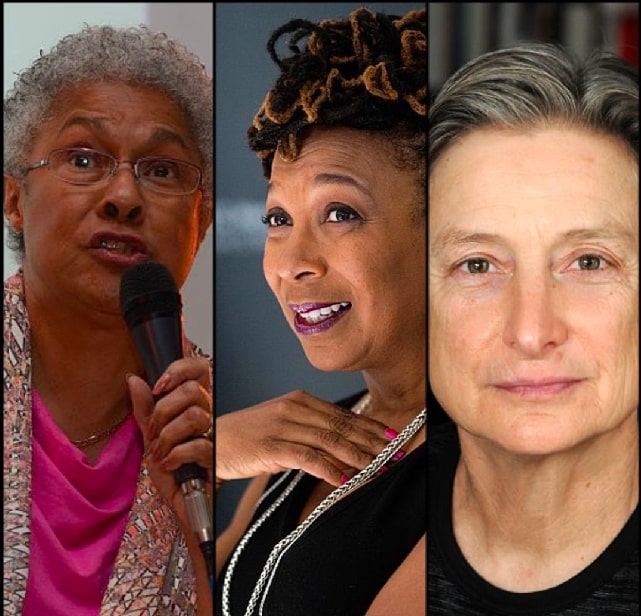 Image Collage - Third Wave Writers
Image Collage - Third Wave Writers
National Women's History Museum
Third Wave Literature
Right at the showtime of the 3rd wave, feminist scholars started to publish new literature that helped readers better understand feminist theory. In 1989, lawyer and theorist Kimberlé Crenshaw developed "intersectionality" to show how someone's various identities (race, course, gender, etc.) overlap to influence how they are treated. This theory led to "intersectional feminism," that formed every bit a response to the multiple means women are oppressed. In 1990, two other revolutionary scholars incorporated the idea of intersectionality into their work. Judith Butler'south "Gender Problem: Feminism and the Subversion of Identity" and Patricia Hill Collins' "Black Feminist Thought: Knowledge, Consciousness and the Politics of Empowerment" both approach feminist theory past studying women's social and political identities.
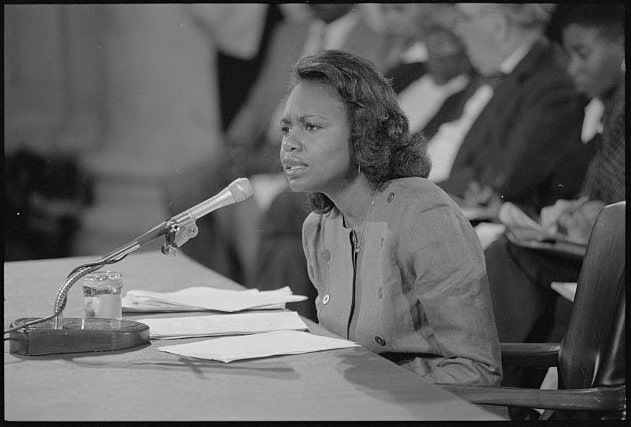 Anita Hill Testifying October 1991
Anita Hill Testifying October 1991
Jenkins, R. Michael, photographer | National Women's History Museum
The Anita Colina Hearings
On October 11, 1991, the world watched as attorney Anita Hill testified against U.S. Supreme Court nominee Clarence Thomas for sexual harassment. In the televised hearings earlier the Senate Judiciary Commission, Loma declared that Thomas had repeatedly harassed her while she was his employee at the Department of Education and the Equal Employment Opportunity Commission. According to Hill, when she worked as his adjutant, Thomas frequently pressured her to go on dates and often made sexually inappropriate comments during their piece of work conversations. Despite Hill's testimony, Thomas was however confirmed as a Supreme Courtroom Justice after the iii-day hearings.
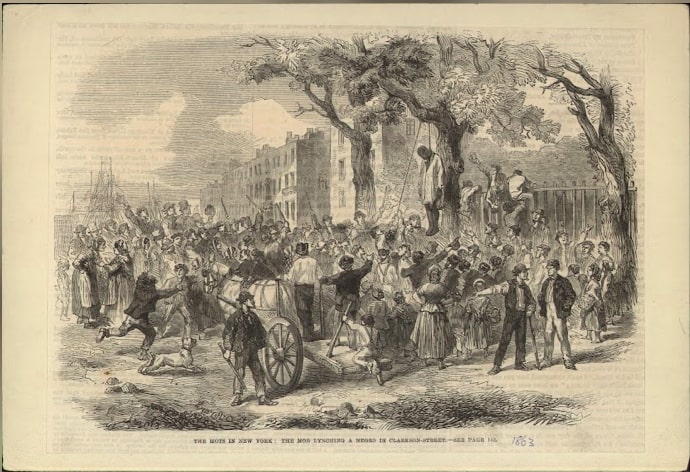 State of war 1861-1865 American Ceremonious (1861-1865)
State of war 1861-1865 American Ceremonious (1861-1865)
LIFE Photo Drove
Although both Thomas and Hill were African American, Thomas believed that the hearing against him was equivalent to a "high tech lynching." This metaphor suggested that he was existence persecuted because of his race. As they both testified before an all-white, all male commission, the history of African American women too being lynched and persecuted was non discussed. Lawyer and author of the "intersectionality" theory Kimberlé Crenshaw was a fellow member of Colina's legal team. She afterwards wrote that the belief that lynching was the ultimate symbol of racist terror "erased black women from the picture." In addition, ane of the most prominent historical figures confronting the lynching of African Americans was a black woman.
National Women's History Museum Women'southward History Minute: "Ida B. Wells"

Later on the hearings, African American feminists and historians across the The states came together and collectively raised $50,000 to purchase a full-page ad in the New York Times. Their manifesto entitled, "African American Women in Defense of Ourselves," was signed by 1,600 women including black feminist historians Barbara Ransby, Deborah Male monarch and Elsa Barkley Brown. These women fought against the handling of Loma during the hearings and stated; "We are particularly outraged by the racist and sexist treatment of Professor Anita Hill, an African American woman who was maligned and castigated for daring to speak publicly of her ain experience of sexual abuse." Post-obit Hill'southward story, many other women had the courage to speak out confronting their own experiences with sexual misconduct.
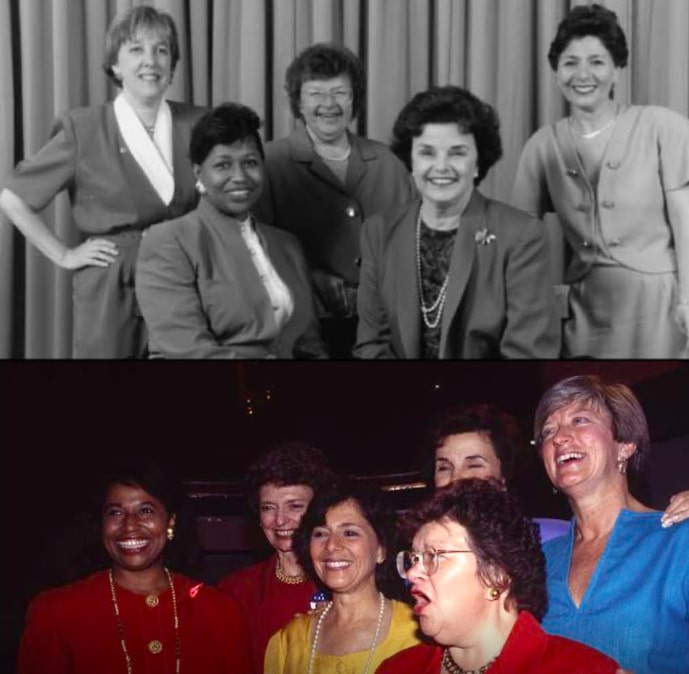 Prototype Collage: Senatorial Candidates from 1992 (1992)
Prototype Collage: Senatorial Candidates from 1992 (1992)
National Women's History Museum
The Twelvemonth of the Woman
For many mainstream feminists, the Loma instance marked a turning bespeak in women's activism. Not only were women speaking publicly nearly sexual assault, just the visibility of the case also caused women to question the male person-dominated leadership in Congress. Before the hearings, seven autonomous women from the House of Representatives marched over to the Senate to demand a further investigation of the accusations confronting Thomas. Although he was even so confirmed as a justice, feminists began to push for a more active function in political leadership. The very adjacent yr, more women were elected to Congress on voting 24-hour interval than in any previous decade. That year became known every bit "The Year of the Woman," and 27 women were elected to Congress.
 Ellen Malcolm, 2015 (cropped) (June 4, 2015)
Ellen Malcolm, 2015 (cropped) (June 4, 2015)
National Women's History Museum
One of the early women's groups that contributed to the success of The Yr of the Woman was "EMILY's List." This women's political network provided the fundraising and resources necessary for an endorsed candidate to successfully run for political office. These women used the strategy of raising coin early in a candidate's campaign and so information technology would attract more donors. This principle was the foundation of the system's name "EMILY's Listing" that is an acronym for "Early on Money Is Like Yeast," because yeast "makes the dough rising." EMILY's List continues to endorse pro-choice Democratic women running for office to this day.
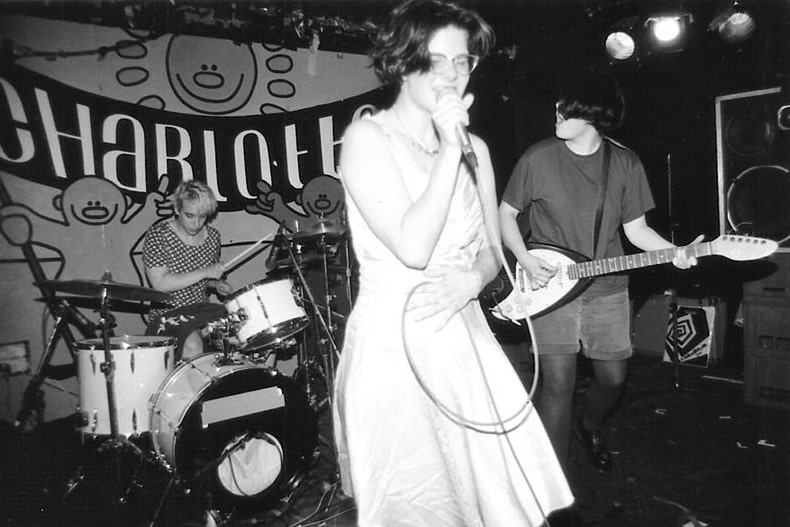 Bratmobile 1994
Bratmobile 1994
Photo By: Greg Neate | National Women'southward History Museum
Riot Grrrrl Movement
In addition to political analogousness groups, punk rock musicians also began to emerge with distinctly feminist agendas. Responding to diverse forms of sexism, feminist musicians decided to organize a "girl anarchism" through their activism. These women started their ain bands and created their own publications dedicated to women's empowerment. Much of their content addressed issues including; sexism, patriarchy, corruption, racism, sexuality and rape. Popular bands such as Bikini Impale, Bratmobile, and Heavens to Betsy, all atomic number 82 this tendency of activism.
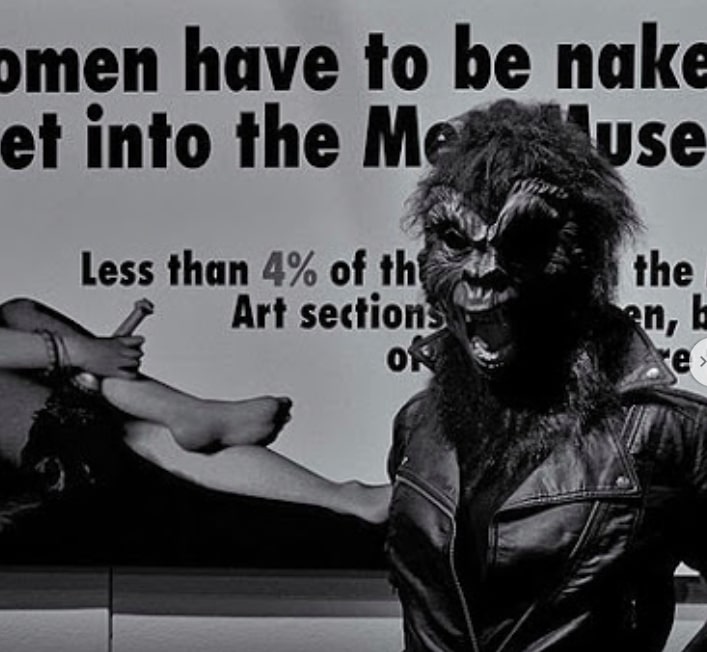 Guerrilla Girls at the V&A Museum, London Aug eight, 2014
Guerrilla Girls at the V&A Museum, London Aug eight, 2014
Photo By: Eric Huybrechts | National Women'due south History Museum
Guerilla Girls
Prior to the evolution of the Riot Grrrl Motion, the Guerrilla Girls gear up the foundation for radical feminist revolt. They formed in 1985 in response to sexism and racism in the art world. This bearding group of feminist artists from New York Urban center decided to have the feminist fine art motility one footstep further by intentionally disrupting the status quo. These women created posters, billboards, and made public appearances in gorilla masks to reveal the sexist and racist practices in the creation and study of visual fine art. One of their about famous posters was an epitome of a naked adult female in a gorilla mask side by side to the phrase "Do women have to be naked to get into the Met. Museum?" The poster also provides the statistics that show the depression number of women featured in the Modernistic Art sections, compared to the high percent of nude art that features women.
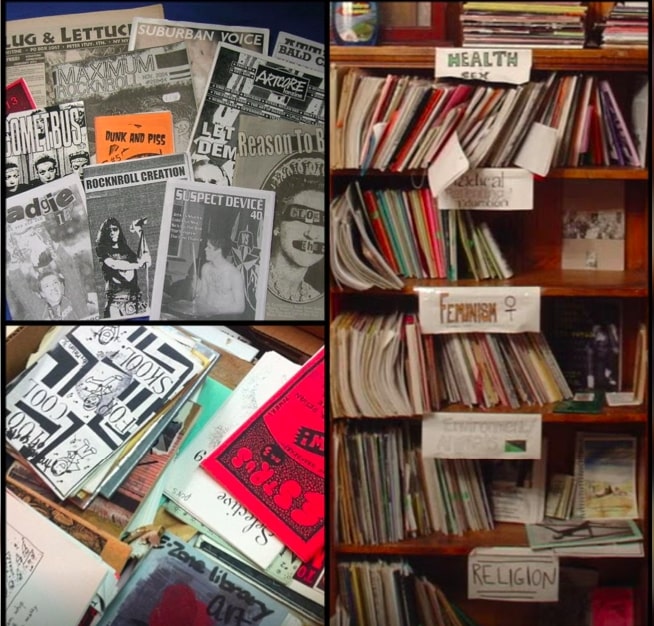 Image Collage: Zine Publications 1990 - 2004
Image Collage: Zine Publications 1990 - 2004
National Women'due south History Museum
Starting in the early on 1990s, radical feminist art seeped into the music world as women affiliated with the Riot Grrrl feminist movement emerged in Olympia, Washington. One of the frontrunners of this movement was Kathleen Hanna, the lead singer of the feminist band Bikini Impale. After collaborating with other Anarchism Grrrl artists on a small magazine called "Riot Grrrl," The Bikini Kill Zine (fanzine) was created. These "zines" used punk rock culture to address feminist issues. By 1991, the Bikini Kill Zine published the Riot Grrrl Manifesto that clearly outlined the reasons for this recent surge of feminist activism through music.
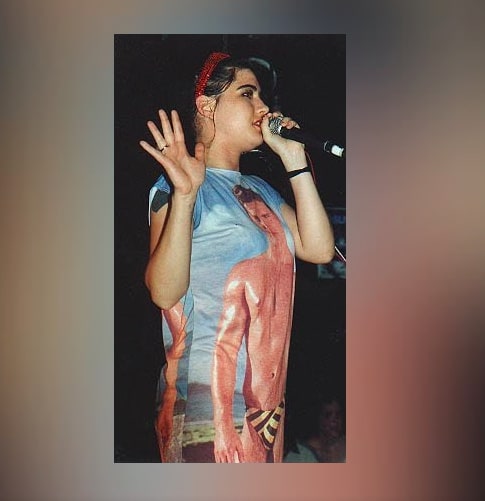 Kathleen Hanna performing with Bikini Kill, 1996
Kathleen Hanna performing with Bikini Kill, 1996
National Women'due south History Museum
Statements from The Riot Grrrl Manifesto, published in 1991 in the Bikini Kill Zine 2:
BECAUSE united states of america girls crave records and books and fanzines that speak to U.s.a. that WE experience included in and can understand in our own ways.
Considering we wanna make it easier for girls to meet/hear each other's work so that we can share strategies and criticize-applaud each other.
BECAUSE we don't wanna assimilate to someone else's (boy) standards of what is or isn't.
Considering we are angry at a order that tells us Girl = Impaired, Daughter = Bad, Girl = Weak.
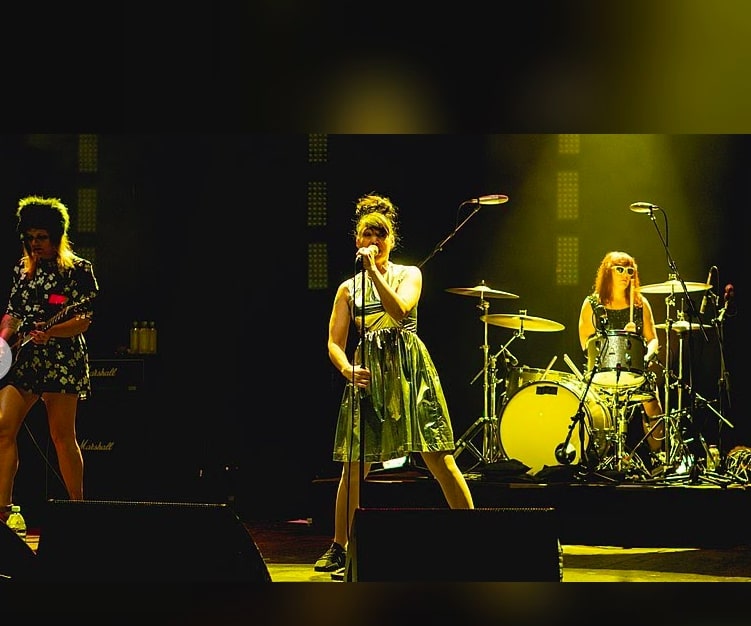 Bikini Kill
Bikini Kill
Photo By: Raph_PH | National Women's History Museum
Many women flocked to these punk rock groups that valued self expression and collective revolt. Kathleen Hanna was known for empowering women at her concerts by shouting "Revolution Girl Mode Now!" or "Girls to the front end!" to encourage her female attendees to come to the front of the audience. Not simply did this provide a safe space for women at stone concerts, merely this practice also became a symbol of the call for women to be brought to the forefront in all areas of life. Every bit the movement grew, other Riot Grrrl bands developed across the country and established nationwide capacity. Many of these feminists played their music during pro-choice rallies and advocated for the reproductive rights of women.
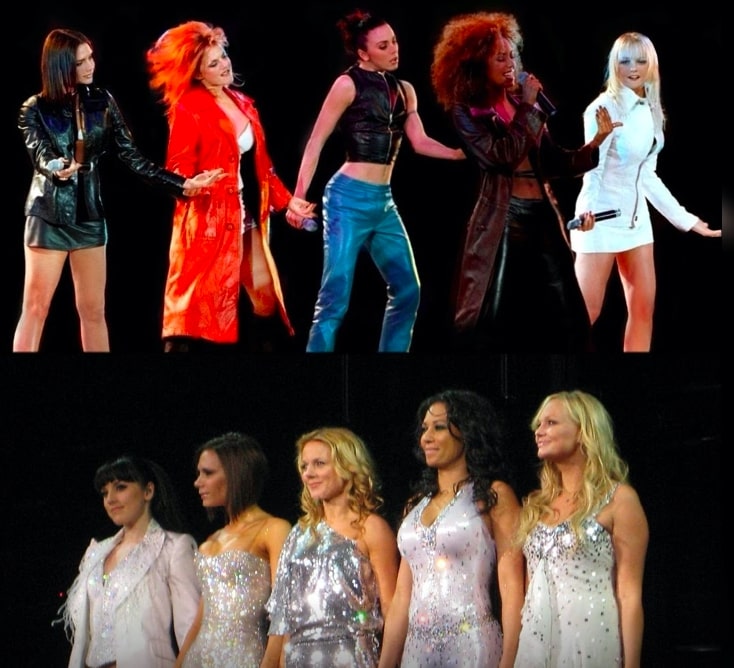 Image Collage: Spice Girls 1997 - 2008
Image Collage: Spice Girls 1997 - 2008
Melanie Laccohee and Ezekiel | National Women's History Museum
Past the mid-1990s, Riot Grrrl bands became then well-known that pop culture started to contain some of the move's terminology. The phrase "Girl Ability," was often used by Bikini Kill and could exist institute throughout the pages of Riot Grrrl zines. Nevertheless, this phrase quickly became a pop civilization slogan after girl groups like The Spice Girls started promoting a "girl power" theme. Due to the mixed messaging, mainstream media began to attach the political Riot Grrrl groups to pop civilisation bands that were not associated with the movement. Many Anarchism Grrrl groups spoke out confronting this media misrepresentation, but unfortunately it had already become a pop civilisation phenomenon. In response, several Riot Grrrl groups dissolved. Nevertheless, many former participants continued to make political music. Even though Bikini Kill released their last album in 1996, lead vocalist Kathleen Hanna has continued to merge music and activism.
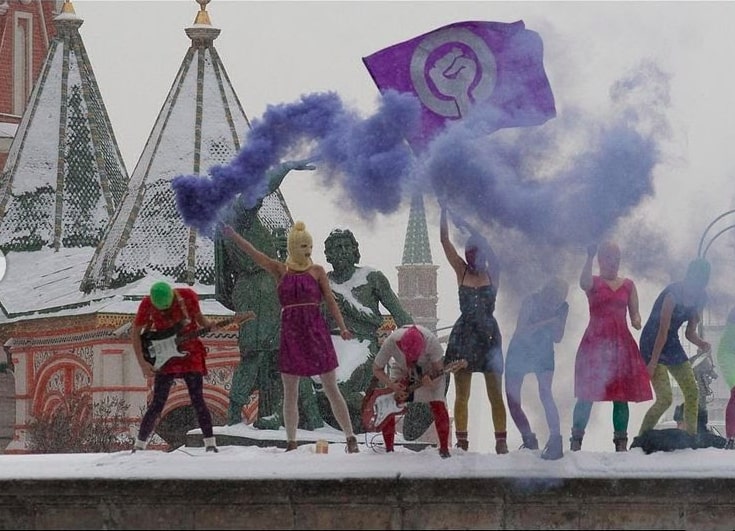 Contemporary ring Inspired by the riot grrrl movement of the 1990s 2012
Contemporary ring Inspired by the riot grrrl movement of the 1990s 2012
Photographer: Denis Bochkarev | National Women's History Museum
Although the prominence of Riot Grrrl groups was short lived, their specific brand of feminism resonated with many women that may non take identified with the concerns or practices of mainstream "cookie-cutter" feminism. These Riot Grrrl groups inspired radical global activism for decades to come, with Anarchism Grrrl bands and chapters forming in Asia, Europe, Australia, and Latin America well into the 2000s.
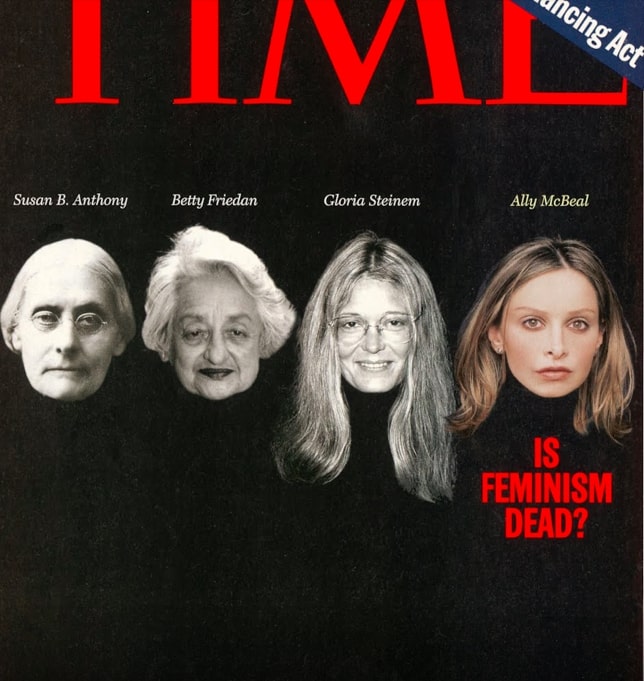 June 29, 1998
June 29, 1998
The End of the Third Moving ridge?
Equally third wave feminists transitioned into the 21st century, it was clear that there were several individualized goals of the movement. Women spoke out in various interest groups about everything including abortion, eating disorders, and sexual attack. Even so, the Anita Colina hearings and Riot Grrrl groups of the early 1990s were key to the development of this third moving ridge. In 2003, Robin Morgan edited an updated version of her original feminist album written in 1970. Her new edition called, "Sisterhood Is Forever: The Women's Album for a New Millennium," featured pieces by both Anita Hill ("The Nature of the Beast: Sexual Harassment") and Kathleen Hanna of the Anarchism Grrrl movement ("Gen X Survivor: From Riot Grrrl Stone Star to Feminist Creative person"). Some scholars believe that the tertiary moving ridge never came to an end and information technology continues on to this day. However for others, new engineering science and social campaigns accept marked the first of a quaternary wave of feminism.
Credits
Exhibit written and curated past Kerri Lee Alexander, NWHM Boyfriend 2018-2020
Adewunmi, Bim. "Kimberlé Crenshaw on Intersectionality: 'I Wanted to Come up up with an Everyday Metaphor That Anyone Could Use.'" NewStatesman, April four, 2014. https://www.newstatesman.com/lifestyle/2014/04/kimberl-crenshaw-intersectionality-i-wanted-come-everyday-metaphor-anyone-could.
Crenshaw, Kimberlé Williams. "Black Women Still in Defense of Ourselves." The Nation, Oct v, 2011. https://world wide web.thenation.com/article/annal/black-women-still-defence force-ourselves/.
Feliciano, Stevie. "The Riot Grrrl Move." The New York Public Library, June 19, 2013. https://www.nypl.org/weblog/2013/06/19/anarchism-grrrl-movement.
"Guerrilla Girls: 'Yous Have to Question What You lot Come across' ." Tate Modern, Oct v, 2018. https://www.tate.org.uk/art/artists/guerrilla-girls-6858/guerrilla-girls-interview-tateshots.
Harris-Perry, Melissa. "Where Are All the Black Feminists in Confirmation?" ELLE, April 18, 2016. https://www.elle.com/culture/career-politics/news/a35699/hbo-confirmation-black-feminists/.
Ryzik, Melena. "A Feminist Anarchism That Still Inspires." The New York Times, June 3, 2011. https://www.nytimes.com/2011/06/05/arts/music/the-riot-grrrl-movement-however-inspires.html.
"The Twelvemonth of the Woman, 1992." US Firm of Representatives: History, Art & Archives. Accessed May 10, 2020. https://history.house.gov/Exhibitions-and-Publications/WIC/Historical-Essays/Assembling-Amplifying-Ascending/Women-Decade/.
Walker, Rebecca, Gloria Steinem, and Angela Yvonne Davis. To Be Existent: Telling the Truth and Changing the Face of Feminism. New York: Anchor Books, 1995. Pp.250
Source: https://www.womenshistory.org/exhibits/feminism-third-wave
0 Response to "Which of the Following Are Factors That Helped Lead to the Start of Feminist Art in the 1970s"
Post a Comment